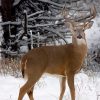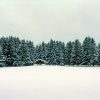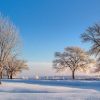Photographing Snow
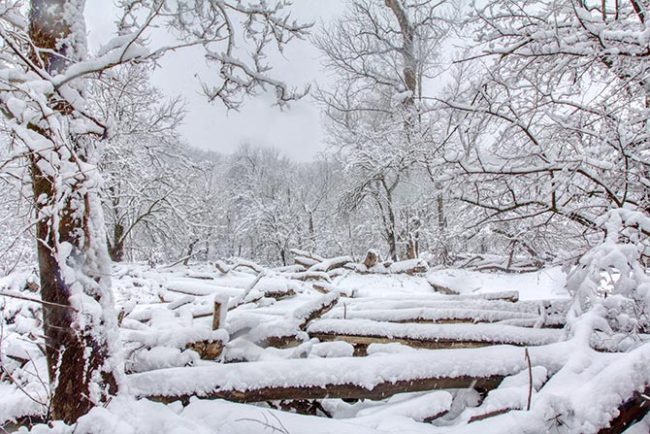
I did not wait for the snow to stop falling before heading out to get this photo and others like it. With snow, you want to get out as soon as possible. That is often when it’s the most photogenic.
Photographing snow can result in some beautiful images. Falling snow and new fallen snow convey a magical quality that inspires photographers to get outside and get some photos. But photographing snow also presents various challenges.
As I mentioned in my mid-December blog post and newsletter, I enjoy photographing snow. Its magical qualities captivate me, and I looked forward to photographing each winter’s snow. Unfortunately, I live in a state that does not get much snow. I live in Nebraska. It gets cold, but we don’t get a lot of snow.
When it does snow, I need to make the most of the limited opportunities living in Nebraska presents. When those opportunities come, I need to overcome the challenges of photographing snow brings. Here are somethings I have learned.
- Go out when it is snowing or right after it snows. The best time to photograph snow is when it’s still sticking or clinging to vegetation and other things. That is when it looks the most beautiful. Sadly, it doesn’t take long before a strong wind comes along and blows it away, or the sunlight begins to melt it. With the infrequent snows we get here in Nebraska, getting out early is a must. I usually head to one of my favorite photo places in our four-wheel-drive SUV while it’s still snowing. I don’t want to miss the magic moments when the snow gently covers everything.
- Find a place close to home. New fallen snow is great at making things that are normally not photogenic beautiful. I’ve seen some beautiful snow photographs shared on social media that people have taken in their neighborhoods. Even a baseball diamond or unplowed parking lot can look like an open field when covered with six to eight inches of fresh snow.
- Intentionally overexposure your photographs. The snow will fool your camera into thinking it’s brighter out than it really is. You can correct that by using your cameras exposure compensation settings. Here’s a link on how to adjust an iPhone’s exposure compensation or for an Android.
- Set your camera to take RAW exposures.
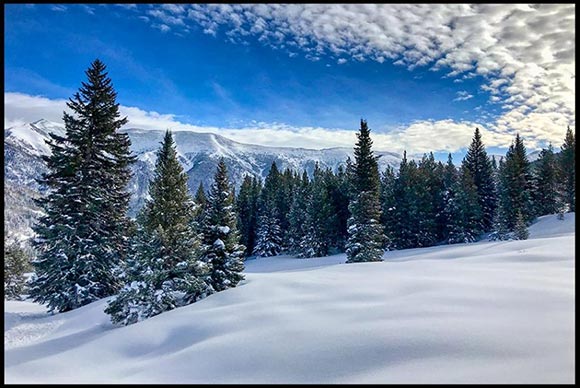
I took this photo with my iPhone while skiing. You can get some great photos of snow with your iPhone, especially when you have it set on Apple ProRAW.
If you understood how to shoot RAW photos, set your camera to take RAW exposures. This will help you make changes to your photograph’s exposure on a computer using post processing software like Photoshop or Photoshop Elements. You can also make raw photos with your iPhone, by using Apple ProRaw. Read this article on Outdoor Photographer for more information on Apple ProRAW.
- Dress warmer than you expect. Often when we photograph, we go through long periods of time where we are not moving. When we remain still to adjust our camera and/or study a subject, we can get cold. So, bundle up in layers, which leads to my next bullet point.
- Dress in layers. Sometimes getting a great snow photo requires us to do some walking or hiking and we may get warm. After walking a while, I sometimes need to take off some layers of clothing. I have a photography backpack that has a compartment where I can put the layers. I have found the simplest layer to remove is a hat. Hats provide a great deal of warmth and just by removing it you can cool yourself down. Another way I also release some body heat, is by simply unzipping my coat. Those two little actions can really keep you from getting too warm while hiking to find your perfect photograph.
- Wear a wicking layer of clothing as the layer that touches your skin. Don’t wear It holds moisture. When you walk around looking for a photograph, you may begin to sweat. When you stop for some time to take a photograph, the sweat against your skin will quickly make you cold. A wicking layer of clothing will take the sweat away from your skin, so you don’t get cold from sweating. Wool is an outstanding natural wicking material, and there are also plenty of synthetic materials that wick moisture away from your skin.
- Think spiritually while photographing snow. How does the snow speak to you about spiritual things? Be in God’s presence as you photograph the beauty of the snow He has created. Ask yourself questions like, “What does this scene tell me about God?” Consider Job 38:22 and Isaiah 1:18.
If you’d like to know more about drawing near to God through photography, sign up for my newsletter.



